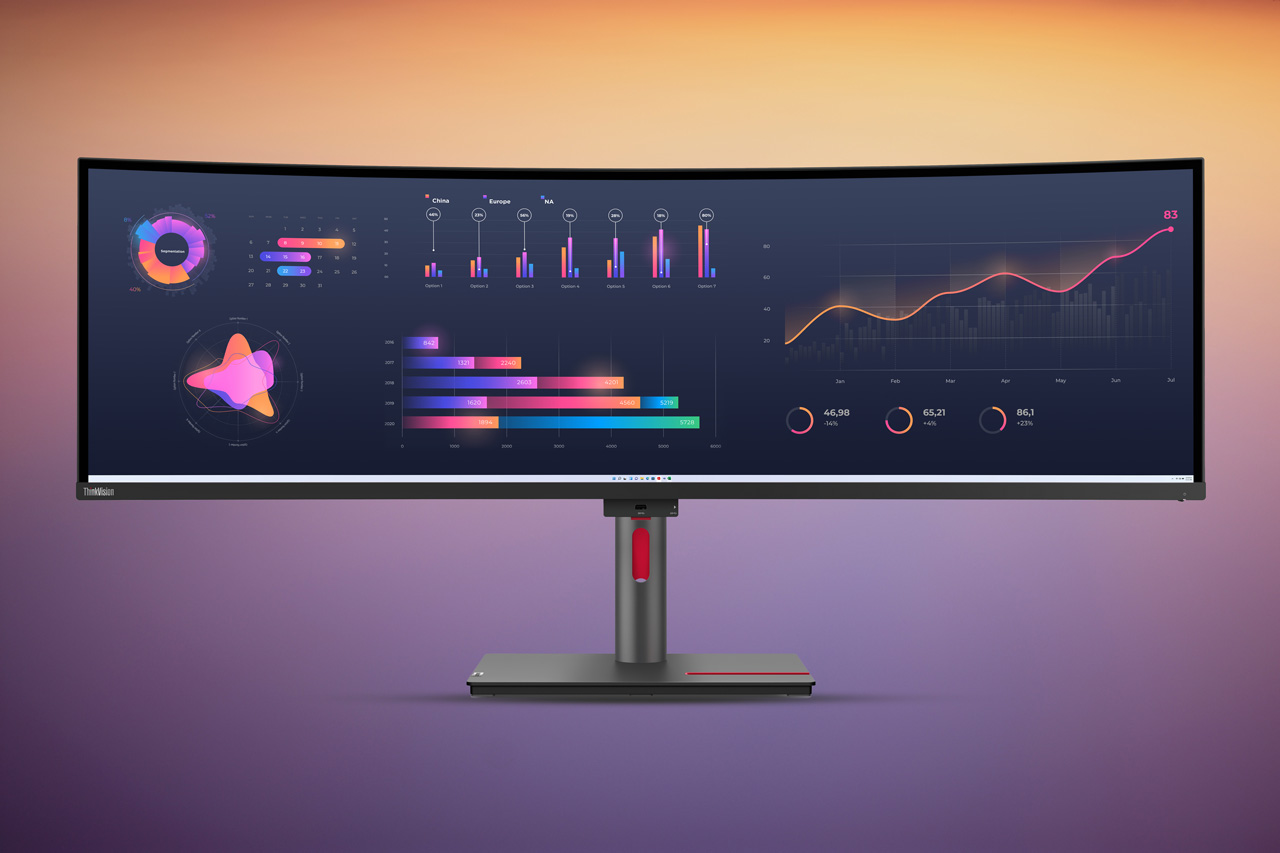How Do You Choose The Best Ultra Wide Monitor For Your Workspace?

An ultra-wide monitor may be a valuable addition to any workspace. It offers a wide field of view that increases productivity, organization, and even immersion in creative or gaming tasks. However, choosing the best ultra-wide monitor can be overwhelming, given the range of options and specifications.
Let’s explore the essential factors to consider to help you make the right choice for your workspace needs:
1. Determine The Purpose Of Your Ultra-Wide Monitor
The first step in choosing the best ultra-wide monitor is understanding what you’ll use it for. Ultra-wide monitors have features tailored to various purposes, from professional work and productivity to gaming and content creation.
- For Productivity: If you need an ultra-wide monitor to enhance productivity, a model with screen-splitting features, picture-by-picture (PBP) mode, and a large resolution (like 3440 x 1440 pixels) is ideal for handling multiple tasks simultaneously.
- For Gaming: Key factors include refresh rate, response time, and compatibility with technologies like G-Sync or FreeSync. An ultra-wide monitor with a high refresh rate (144 Hz or above) and a quick response time (1ms to 4 ms) can provide a smoother, immersive experience.
- For Content Creation: If you’re using the monitor for graphic design, video editing, or other creative work, you’ll want high color accuracy, broad color coverage (like DCI-P3 or Adobe RGB), and excellent brightness levels.
Defining your primary use case will narrow your options and help you focus on monitors with the specific features you need.
2. Choose The Right Screen Size And Aspect Ratio
The screen size and aspect ratio are two of the most defining features of an ultra-wide monitor. Ultra-wide monitors come in various sizes, usually 29 to 49 inches, and commonly feature an aspect ratio of 21:9 or 32:9.
- Aspect Ratios: A 21:9 aspect ratio offers a more traditional ultra-wide experience, providing extra horizontal space while maintaining a manageable size. This is ideal for general multitasking or gaming setups. The 32:9 “super ultra-wide” aspect ratio offers the same width as two standard monitors side by side, perfect for those who need extensive screen real estate.
- Screen Sizes: A 34-inch or 38-inch monitor is typically sufficient for a general workspace setup. For users who need maximum screen space or an immersive experience (such as gamers or content creators), a 49-inch super ultra-wide monitor may be preferable. However, remember that larger screens also require more physical desk space.
Finding the right balance between size and aspect ratio depends on your work area and personal preference. Measure your desk and workspace area carefully to ensure your monitor fits comfortably.
3. Evaluate The Display Resolution
Resolution is crucial in choosing an ultra-wide monitor, as it directly impacts image clarity and workspace efficiency. A higher resolution means more pixels, translating to sharper visuals and more screen space.
- 2560 x 1080 (Full HD): This resolution is common on smaller ultra-wide monitors (around 29 inches). While cost-effective, it may appear pixelated or less sharp on larger monitors.
- 3440 x 1440 (WQHD): This is the ideal resolution for 34-inch and 38-inch ultra-wide monitors, providing a great balance between sharpness and screen real estate. It’s also suitable for both productivity tasks and immersive experiences.
- 5120 x 1440 (Dual QHD): This resolution delivers crystal-clear visuals for 49-inch super ultra-wide monitors, making it suitable for professional work and gaming.
Higher resolutions tend to be more expensive but significantly enhance image quality. Investing in a monitor with WQHD or Dual QHD resolution is worthwhile if you’re a professional who needs high-detail visuals.
4. Consider Refresh Rate And Response Time For Smooth Performance
Refresh rate and response time are crucial for gamers but can also impact professionals working with fast-moving visuals or video editing.
- Refresh Rate: A refresh rate of 60Hz is standard for most productivity monitors. However, for gaming or video editing, a refresh rate of 120Hz, 144Hz, or even higher offers smoother motion and reduces visual lag. For gaming purposes, look for a monitor with a refresh rate of at least 144Hz.
- Response Time: Response time indicates how quickly pixels change colour. A response time of 1ms to 4 ms is ideal for gaming, reducing ghosting and motion blur. A higher response time is acceptable for general work tasks, but lower response times will enhance the visual quality of fast-paced content.
The refresh rate and response time together impact the fluidity of visual content, so choose accordingly based on your primary use case.
Conclusion: Elevating Your Workspace with the Right Ultra-Wide Monitor
Choosing the best ultra-wide monitor involves balancing screen size, resolution, refresh rate, color accuracy, and connectivity options. Whether you need a productivity, gaming, or creative task monitor, the right ultra-wide monitor can transform your workspace and enhance efficiency. By considering these factors and understanding your specific needs, you can make an informed decision and find an ultra-wide monitor that maximizes your workflow and productivity.





